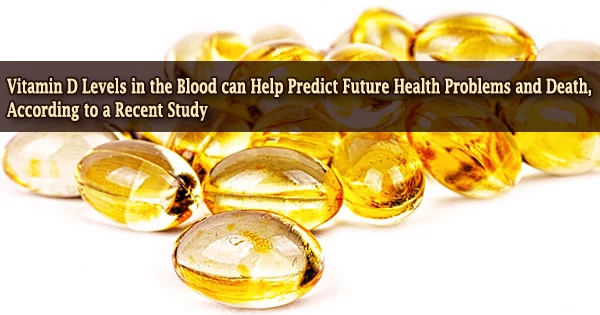According to a study presented at e-ECE 2020, free, circulating vitamin D levels in the blood may be a better predictor of future health concerns in aging males. These findings imply that the free, precursor form of vitamin D in the bloodstream is a better predictor of future health and illness risk than the commonly measured total vitamin D.
Vitamin D (also known as “calciferol”) is a fat-soluble vitamin that can be found naturally in a few foods, added to others, or purchased as a dietary supplement. When ultraviolet (UV) rays from sunshine strike the skin and activate vitamin D production, it is also created endogenously.
Because vitamin D deficiency is linked to a variety of major health problems as we age, this study implies that future research into vitamin D levels and their relationship to poor health could be fruitful.
Vitamin D insufficiency is frequent throughout Europe, particularly among the elderly. It has been linked to an increased risk of acquiring a variety of aging-related disorders, including cardiovascular disease, cancer, and osteoporosis.
Vitamin D aids calcium absorption in the gut and keeps serum calcium and phosphate levels in check, allowing for normal bone mineralization and preventing hypocalcemic tetany (involuntary contraction of muscles, leading to cramps and spasms). It’s also required for osteoblasts and osteoclasts to develop and repair bone.
Most studies focus on the association between total 25-hydroxyvitamin D levels and age-related disease and mortality. As 1,25-dihydroxyvitamin D is the active form of vitamin D in our body, it was possible it could have been a stronger predictor for disease and mortality. It has also been debated if the total or free vitamin D levels should be measured. Our data now suggest that both total and free 25-hydroxyvitamin D levels are the better measures of future health risk in men.
Dr. Antonio
Although there are various forms of vitamin D in the body or metabolites, the total amount of these metabolites is most typically used to determine a person’s vitamin D status. 25-dihydroxyvitamin D, a prohormone, is transformed to 1,25-dihydroxyvitamin D, which is the active form of vitamin D in our bodies.
Only a small fraction of the vitamin D metabolites in our blood are free to be physiologically active because they are attached to proteins. As a result, the active, free forms may be a more accurate predictor of current and future health.
Vitamin D also has other functions in the body, such as reducing inflammation and modulating cell proliferation, neuromuscular and immunological function, and glucose metabolism.
Using data from the European Male Ageing Study, which included 1,970 community-dwelling men aged 40-79 between 2003 and 2005, Dr. Leen Antonio of University Hospitals Leuven in Belgium and a team of researchers evaluated whether the free metabolites of vitamin D were superior health predictors.
Vitamin D total and free metabolites were compared to participants’ current health status after controlling for potentially confounding characteristics such as age, BMI, smoking, and self-reported health.
A increased risk of death was linked to total levels of both free and bound vitamin D metabolites. Only free 25-hydroxyvitamin D, not free 1,25-dihydroxyvitamin D, was found to be predictive of future health concerns.
Dr Antonio explains, “These data further confirm that vitamin D deficiency is associated with a negative impact on general health and can be predictive of a higher risk of death.”
The causal links and underlying mechanisms are unknown because this is an observational study. Furthermore, particular information regarding the causes of death of the males in the study was not available, which could be a complicating factor.
“Most studies focus on the association between total 25-hydroxyvitamin D levels and age-related disease and mortality. As 1,25-dihydroxyvitamin D is the active form of vitamin D in our body, it was possible it could have been a stronger predictor for disease and mortality. It has also been debated if the total or free vitamin D levels should be measured. Our data now suggest that both total and free 25-hydroxyvitamin D levels are the better measure of future health risk in men,” says Dr. Antonio.
Dr. Antonio and her colleagues are currently completing the statistical analysis and preparing a publication based on the findings.
















